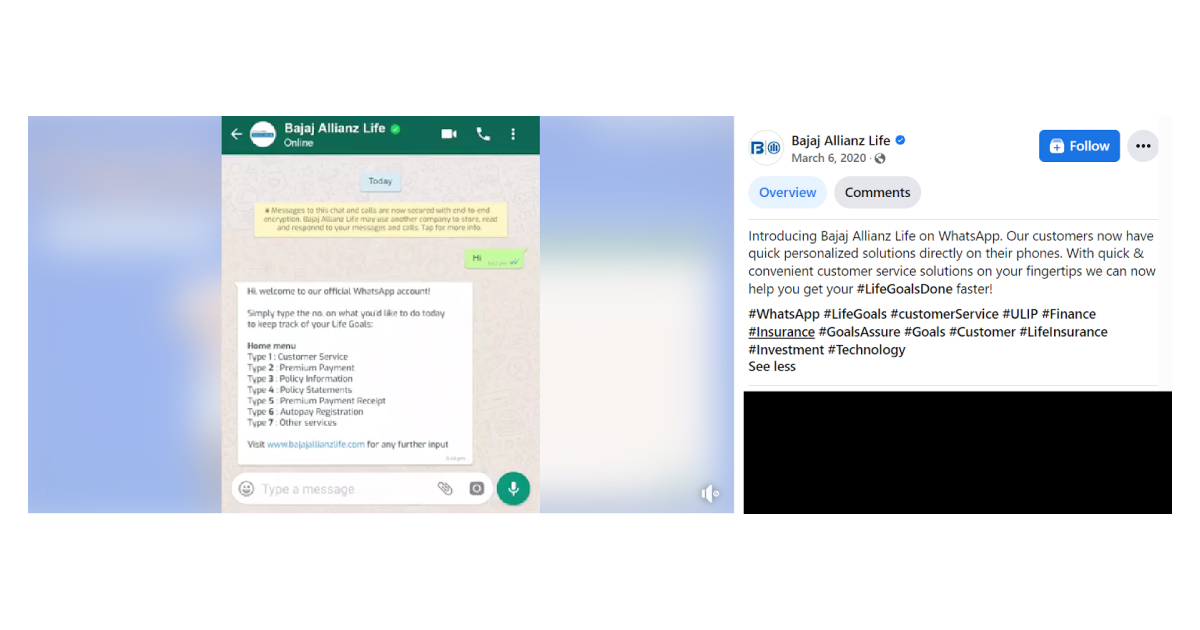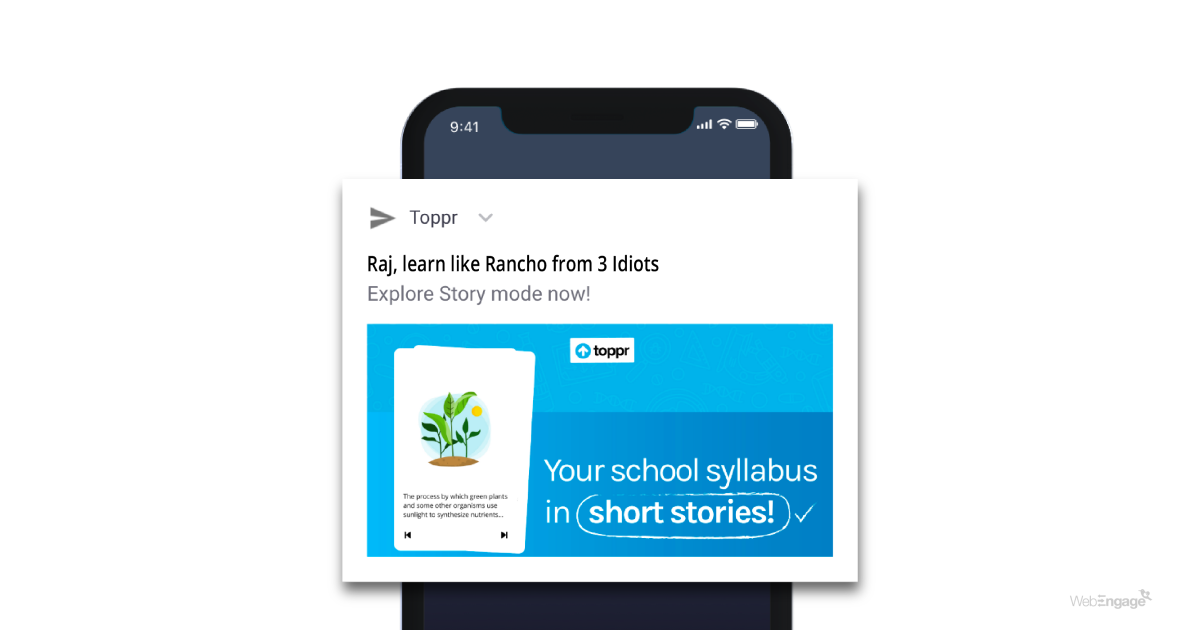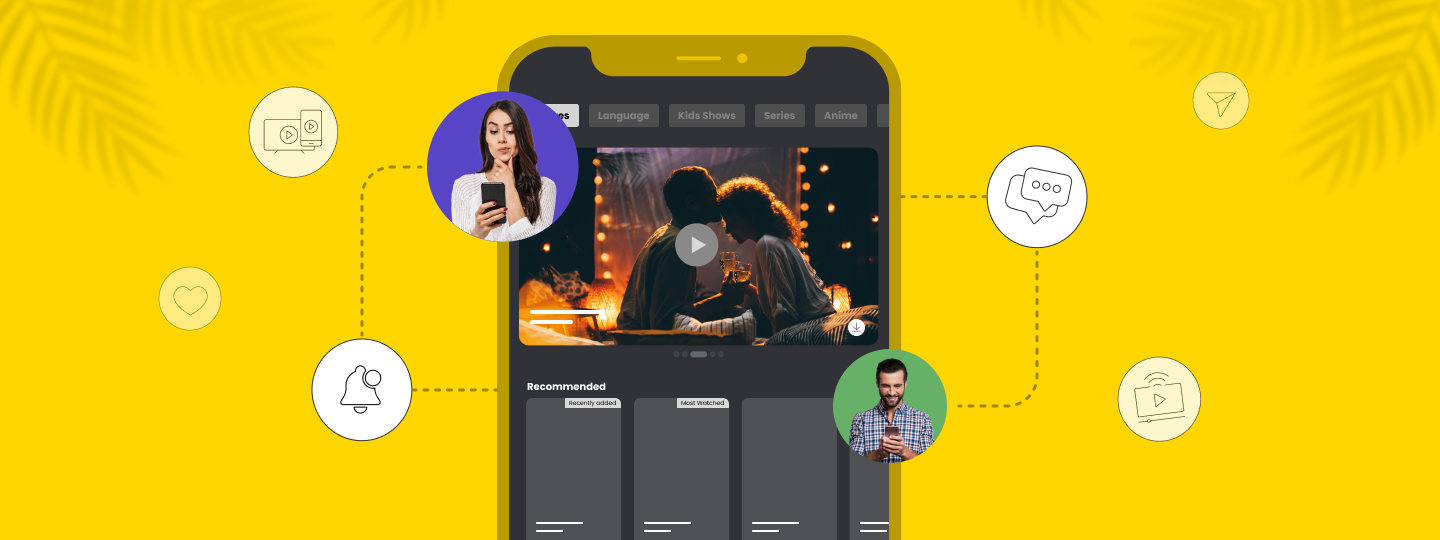Often used interchangeably, AI and ML perform different duties, which we will encode today! So, before we get into the core of what they can do in the realm of customer engagement, let’s understand what they mean.
Artificial Intelligence (AI): In simple terms, AI is computer-controlled technology that can perform tasks typically done by humans because it requires human-like intelligence and acumen.
Machine Learning (ML): On the contrary, ML is a subset of AI that makes software smarter by learning from data to predict outcomes more accurately.
When married together, this cutting-edge technology has the power to radically change how businesses serve their customers and foster enduring relationships while delivering delightful customer experiences.
Companies like Amazon and Netflix have been pioneers in using AI/ML strategies to analyze user preferences and behaviors, providing personalized product or content recommendations to users, further increasing sales and engagement.
Another prime example of AI in action is Tesla’s Auto Pilot system, which ensures safer and less tiring self-driving car experiences. It uses cameras, radar, and machine learning to detect vehicles, maintain speed, and change lanes when needed. While you stay alert with your hands on the wheel, the AI system assists in steering, accelerating, and braking, making long journeys a cakewalk. It’s like having a co-pilot who has got your back for long drives.
In this article, we’ll explore how AI and ML can aid your business and supercharge your customer engagement.
The Core of Customer Engagement
Now, prior to discussing how AI and ML can boost customer engagement, it is necessary to understand what customer engagement entails. Customer engagement refers to the emotional relationship that customers build with a brand. It covers every customer interaction with a company, from their first website visit to post-purchase support and service.
Thus, customer engagement is closely related to customer experience (CX), which is customers’ perception of their interaction with a company. It is a ‘moment in time’ that customers associate your brand with. Customer engagement results from multiple experiences that produce an emotional connection. Engagement with your brand increases when customers have positive, frequent, and helpful experiences.
Engaged customers exhibit the following key behaviors:
- Repeat Purchases: Engaged customers return for additional purchases, leading to higher customer lifetime value.
- Brand Loyalty: They feel a deep involvement with the brand and are less likely to opt for the services/products of your competitors.
- Referrals: Engaged customers become “brand ambassadors,” recommending your offerings to friends and family.
- Feedback: They provide valuable feedback and suggestions, helping companies improve their products and services.
- User-Generated Content: Engaged customers often write reviews, social media posts, and testimonials, which can further promote your brand.
AI/ML evolution in the world of Customer Engagement
The evolution of Artificial Intelligence (AI) and Machine Learning (ML) in customer engagement has been a fascinating journey characterized by significant advancements and transformative impacts on businesses. These technologies have evolved from their early stages to become critical tools in understanding, interacting with, and satisfying customer needs. According to a Pegasystems survey on customer engagement, 100% of top-performing companies utilize AI. Additionally, 56% of the top performers report investing in AI to personalize and continuously learn from customer interactions. Let’s explore this evolution in more detail:
Early AI/ML Applications: Initially, AI and ML in customer engagement were rudimentary, with simple chatbots and basic recommendation systems. Chatbots could handle straightforward customer inquiries, while recommendation algorithms offered product suggestions based on past purchase history.
Data Proliferation: As the digital age progressed, the volume of customer data exploded. AI and ML began to play a pivotal role in processing and extracting valuable insights from this data. Businesses use predictive analytics to anticipate customer behavior, allowing for more targeted marketing efforts.
Personalization: AI and ML enables businesses to personalize customer interactions on a larger scale. It aids in delivering more accurate product recommendations, to implement marketing campaigns tailored to individual preferences. This personal touch leads to increased customer engagement and loyalty.
Real-time Insights: Integrating AI and ML into customer engagement systems allowed for real-time customer behavior analysis. Companies could respond promptly to customer inquiries, adapting their strategies on the fly based on the latest data.
Conversational AI: AI-driven chatbots and virtual assistants evolved to handle complex conversations. Natural language processing (NLP) and sentiment analysis enabled these AI systems to understand and respond to customer emotions and nuances.
Customer Support Automation: AI and ML found significant utility in automating customer support. Chatbots could handle a wide range of inquiries, offering 24/7 assistance and reducing response times.
Customer Journey Mapping: AI and ML helped businesses map and analyze the entire customer journey, identifying pain points and opportunities for improvement. This holistic view allowed for a more seamless and satisfying customer experience.
Predictive Customer Engagement: ML algorithms became adept at predicting customer behavior and churn. By analyzing historical data, AI systems could forecast which customers were at risk of leaving and take proactive steps to retain them.
Omnichannel Engagement: AI/ML facilitates omnichannel customer engagement, ensuring consistent experiences across various platforms and touchpoints. This cohesiveness improves customer satisfaction and loyalty.
Hyper-Personalization: Today, AI/ML are at the forefront of hyper-personalization. They can analyze vast datasets to provide individualized product recommendations, content, and pricing, creating a level of personalization that was once unimaginable.
AI and ML Strategies: 5 Transformative Effects on Customer Engagement
1. Personalized Recommendations
AI-driven personalized recommendations are transforming customer engagement across various industries. A recent research by Forrester revealed that AI-driven personalization will become a crucial element of customer experience in 2023. Moreover, the study predicts that no less than 10% of companies will direct their investments toward AI-powered digital content creation in the following years.
For example, Netflix uses AI to suggest movies and series based on your viewing history, keeping you engaged and loyal. Swiggy, an Indian food delivery platform, employs AI and ML algorithms to recommend dishes based on past orders, saving you time and introducing new flavors.
An online Men’s fashion brand, Powerlook, employed WebEngage’s Catalog and Recommendation Engine to solve for a lack of user-specific recommendations on their website. Based on a user’s purchase history, outfits and other fashion offerings were recommended to users after 15 days since their last purchase. Additionally, products and choices were also recommended based on users’ cart history. The results, a 302% uptick in unique conversions, speak for themselves.

Just as it was able to help Powerlook, the WebEngage Recommendation, and Catalog Engine can make a difference to your business as well, by helping you generate personalized recommendations for your clientele.
2. Dynamic Content Generation with Generative AI
A major challenge for many businesses is generating high-quality, relevant content consistently. This is where Generative AI takes precedence. Generative AI falls under the umbrella of AI. It utilizes natural language processing and ML capabilities to produce new content that resembles human-generated content. It alleviates brands’ burden of curating fresh content by auto-populating various formats like text, images, videos, or audio content. Generative AI helps curate and aggregate content from various sources to create customized news feeds, playlists, product catalogs, and more in seconds. This provides users an unbroken stream of relevant and interesting content, keeping them engaged.
Discover how you can boost your campaign effectiveness with WebEngage’s Generative AI.
BECO, an online brand, faced two challenges: customers leaving their shopping carts and ghosting brand messages. They partnered with WebEngage to harness the power of Generative AI to send real-time WhatsApp campaigns. With the power of Generative AI, BECO created a digital avatar of Dia Mirza, their brand ambassador, involving the creation of video and audio clones tied to the avatar’s unique identity. Leveraging AI’s text-to-video capabilities, these clones were seamlessly combined to craft personalized messages. This new approach completely changed how they connected with celebrities, making them part of the customer’s journey. This strategy empowered BECO to deliver Dia Mirza’s avatar-based messages without her dedicating an entire day to traditional shooting sessions.
Here’s a quick look into their AI and Ml generated video:
Sephora, a global cosmetics retailer, utilizes Generative AI to power its Virtual Artist app. Customers can use this app to try on different makeup products, such as shades of lipstick, eyeshadow, and false lashes, virtually. This fun and engaging experience helps customers save time and make purchase decisions. It also increases brand loyalty and advocacy as users can share their virtual “makeovers” on social media.

3. Conversational AI Marketing
Recently, a news channel in Orissa launched an AI news anchor named Lisa to provide news updates to viewers. Chatbots and virtual assistants powered by AI/ML systems perform a different role, but just like Lisa, they are a “likeness of humans.” Moreover, they are becoming commonplace tools for businesses in customer engagement. These AI-driven agents can answer customer queries instantly, offer support, and even complete transactions.
For instance, when a customer visits an e-commerce website with a question about a product, an AI-powered chatbot can provide immediate assistance, helping the customer make an informed decision. This immediate, personalized interaction enhances the customer experience. It keeps them engaged and prevents them from leaving the website to look for information elsewhere.
The biggest example, perhaps, is Amazon’s customer service chatbot, Alexa. Customers use Alexa to make purchases, track orders, get product recommendations, etc., all through natural language interactions.
Closer home, in India, Bajaj Allianz uses an AI-driven WhatsApp bot to assist customers with 36 service requests. This has greatly impacted customer engagement for the insurer, which reported a direct benefit of Rs 45 crore as of September 2021.

Similar efforts to leverage AI in conversational marketing are also going on at Swiggy, which hopes to pilot a neural search feature to support voice-based and typed queries in various Indian languages. A Dineout conversational bot, which acts as a “virtual concierge,” is also an attempt by Swiggy to boost customer engagement.
4. Content Personalization
Beyond personalization and product recommendations, AI is critical in enhancing your customer experiences by predicting user behavior and your ideal cohorts. Instead of creating broader segments extracted from basic demographics, AI and ML systems help you narrow down your users based on their purchasing patterns, individual user preferences, behavior, geographic, psychographic, appographics, and more to curate content that grabs attention from the right users. You can also add another layer to this content personalization mix to identify and re-engage ‘at risk’ users with RFM analysis. Personalizing content allows brands to keep users engaged and anticipate more content that matches their expectations and interests.
For example, you can curate unique landing pages, product descriptions, call-to-action buttons, images, etc., personalized to each visitor using robust AI or ML algorithms, increasing the chances of conversion and engagement.
Toppr, a booming after-school learning app for 5th to 12th-grade Indian students, was able to achieve after partnering with WebEngage. Using RFM analysis, Toppr could segment its users, allowing them to send personalized communication to them. They also employed a multi-channel approach by sending users timely and contextual learning material using push notifications, SMS, and email. This led to 133% growth in conversions and 78% M6 retention.

Brands can also leverage AI/ML algorithms to create personalized subject lines in emails, content, and product recommendations specifically for each recipient, which can help businesses achieve higher email open rates, click-through rates, and conversions. Thrillark, a marketplace that curates experiences for travelers, increased its user engagement by employing this strategy. WebEngage helped Thrillark to hyper-personalize its marketing communication and offer personalized recommendations to its users. As a result, Thrillark achieved a 60% increase in user engagement since inception and a 15% increase in repeat purchases by travelers who used the personalized recommendations.
Thus, we can see that WebEngage has a proven track record in hyper-personalization of marketing communication. WebEngage can do the same for your brand, using tools like Web Personalization, RFM analysis, Journey Designer, and more.
5. Content Translation and Localization:
AI has the potential to revolutionize localization through enhanced translation accuracy and consistency across languages and cultures. Machine learning algorithms analyze extensive data, uncovering patterns that may elude human translators, leading to continuous improvement in translation accuracy. The AI-driven translation is notably faster than human counterparts, enabling efficient digital content localization to remain up-to-date globally. Additionally, AI-based localization is scalable and cost-effective, making it accessible to businesses of all sizes. Although AI has some limitations in handling idioms and cultural nuances, the ongoing evolution of AI technology is expected to address these challenges, promising more accurate and effective localization solutions. Leveraging Natural Language Processing (NLP) and machine learning, AI-powered localization tools ensure accurate, contextually appropriate, and culturally sensitive translations, ultimately benefiting businesses by offering improved accuracy, faster turnaround times, cost-effectiveness, scalability, and enhanced cultural sensitivity.
Addressing Hurdles in AI/ML for Customer Engagement
Customer engagement through AI/ML presents promising opportunities but comes with a set of challenges. Let’s explore some key obstacles and ways to overcome them:
Data Quality and Quantity: AI and ML heavily rely on data. Poor quality or insufficient data can hinder the effectiveness of customer engagement algorithms. The key is to invest in data quality and collection processes like CDP and consider data augmentation techniques to supplement limited datasets.
Privacy Concerns: Gathering and utilizing customer data for engagement must adhere to strict privacy regulations. Mishandling data can result in legal issues and loss of customer trust. Ensure customer data security by implementing robust data protection measures and transparent data handling practices to comply with privacy laws.
Complex Implementation: Adding AI and ML to current systems can be complicated and resource-heavy. To make it easier, create a clear plan and roll out changes gradually to reduce disruptions. Moreover, complex AI models can be difficult to interpret, making understanding the reasoning behind customer engagement decisions challenging. Hence, invest in explainable AI techniques and prioritize models that offer transparency.
Training and Skill Gap: AI and ML talent scarcity poses challenges in implementing customer engagement solutions. Companies can invest in employee training and upskilling to address this, offering relevant courses and certifications. This nurtures an in-house team capable of managing AI projects. Alternatively, outsourcing to AI experts and firms provides specialized knowledge and support without building an internal AI team. These strategies empower organizations to overcome the talent shortage and effectively deploy AI-driven customer engagement solutions.
Technical Costs: Developing and maintaining AI and ML solutions can be expensive. For small businesses, it’s challenging to invest in these technologies. Your best bet is to explore cost-effective AI tools and cloud-based solutions and evaluate the long-term ROI. Tools like WebEngage are cost-effective and result-driven in retaining your potential customers.
Constant Evolution: AI and ML technologies are continually evolving. Keeping up with the latest advancements is crucial for staying competitive. To address this, foster a culture of continuous learning and innovation in your organization while staying updated with industry trends.
Ethical Considerations: Do not undermine ethical concerns like data ethics and AI’s impact on society. Create an ethical framework for AI and ML usage, and regularly check if it aligns with your organization’s values.
Conclusion:
Incorporating AI/ML into your customer experience strategy can be a game-changer. These technologies offer real-time insights, predictive analytics, and the ability to personalize customer journeys across channels. By automating repetitive tasks, optimizing agent assignments, and providing a comprehensive customer view, AI/ML empower your team to deliver exceptional service. Language flexibility, AI knowledge management, and ongoing training enhance customer support capabilities.
As AI/ML continue to evolve, there are endless possibilities for organizations to harness their dynamic potential and drive meaningful improvements in customer engagement and satisfaction.
Explore how your business can harness these innovative and cutting-edge AI/ML technology to ramp up customer engagement. Read our Impact Stories and Request a Demo to take the first step towards curating engaging AI and ML-powered marketing campaigns.


































 Dev Iyer
Dev Iyer
 Vanhishikha Bhargava
Vanhishikha Bhargava




